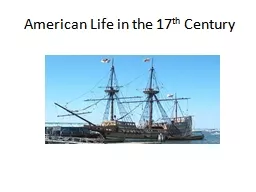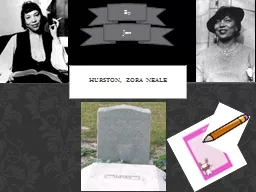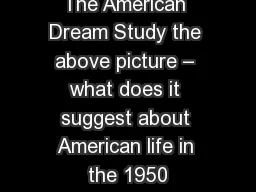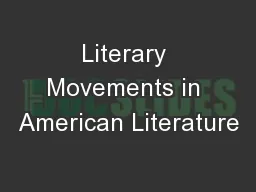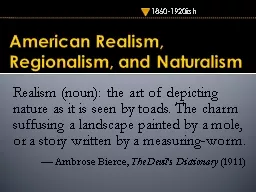PPT-American Life in the 17
Author : tatiana-dople | Published Date : 2017-05-20
th Century The Unhealthy Chesapeake Mortality was high in early Virginia and Maryland 50 did not live to see their 20 th birthday indicating that infant amp early
Presentation Embed Code
Download Presentation
Download Presentation The PPT/PDF document "American Life in the 17" is the property of its rightful owner. Permission is granted to download and print the materials on this website for personal, non-commercial use only, and to display it on your personal computer provided you do not modify the materials and that you retain all copyright notices contained in the materials. By downloading content from our website, you accept the terms of this agreement.
American Life in the 17: Transcript
th Century The Unhealthy Chesapeake Mortality was high in early Virginia and Maryland 50 did not live to see their 20 th birthday indicating that infant amp early childhood mortality was especially high due to large numbers of diseases like malaria. 57375Doyle brPage 2br OO KS CHALLENGED R BANNED 2O122O13 Banned Books Week 2013 is celebrating more than thirty years of the freedom to read This freedom not only to choose what we read but also to select from a full array of possibilities is 64257rm Robert Frost. 1874 - 1963. Lived much of his life in New England . Used more traditional poetic forms . Writes language as it is actually spoken. Writes searching and often dark meditations on universal themes. Hurston, . Zora. Neale. B. y. Jon. African-American . writer, b. . Notasulga. , Ala. She grew up in the pleasant all-black town of Eatonville, Fla. and, moving north, graduated from Barnard College, where she studied with Franz Boas. Her placid childhood and privileged academic background are often cited as major reasons for her work's general lack of stress on racism, a characteristic so unlike such contemporaries as Richard Wright. An anthropologist and folklorist, Hurston collected African-American folktales in the rural South and sympathetically interpreted them in the collections Mules and Men (1935) and Tell My Horse (1938). A third volume of tales, Every Tongue Got to Confess, was discovered in manuscript and published in 2001. Hurston, a significant figure in the Harlem Renaissance, was also the author of four novels including Jonah's Gourd Vine (1934) and the influential Their Eyes Were Watching God (1937). Her plays include the comedy Mule Bone (1931), written in collaboration with her friend Langston Hughes. 1607-1692. Key Concept 2.1: Europeans developed a variety of colonization and migration patterns, influenced by different imperial goals, cultures, and the varied North American environments where they settled, and they competed with each other and American Indians for resources. Objective. : “What is your definition of the American dream? . Give examples of what this means to you.. quickwrite. Does the American Dream mean the same thing to everyone? How was your definition similar to your partner’s? To the rest of class? Was there anything that was different or unique about your definition from your partner? From class?. Learning Objectives. Recap causes of the American Dream. Consider how the American Dream developed. Evaluate the America Dream. Think back to last lesson – how do these 3 images link to explain why there would have been a consumer boom in the 1950s?. Or, how we ended up with all these pieces of literature we have to study in school.. Overview. There are many different literary movements and not everyone agrees on what qualifies things to be a movement. Naturalism. 1860-1920ish. Realism (noun): the art of depicting nature as it is seen by toads. The charm suffusing a landscape painted by a mole, or a story written by a measuring-worm. . –– Ambrose Bierce, . What is American Literature?. American Literature is exactly what it sounds like literature that is specific to America. So what exactly does that mean?. Early American Fiction (1492-1789). The history of American Lit. begins with the 1. This American Life: 20 acts in 60 minutes – Act 1. Lead-in. Do you know this guy?. You are going to listen to him talking about an embarrassing moment.. What would an actor find embarrassing?. Play the audio file (This American Life: 20 acts in 60 minutes) . The American Dream History and Reality Warm-Up If you overheard a new immigrant say “I want to live the American Dream”, what do you think they mean by that? Answer in your spiral if you have it or on the blank sheet of paper from yesterdays map activity. Mid-Late 1800’s. Introduction to Imperialism:. ENTRY # . 25. Using the maps on page 457 and 476 in the book …. Where. . and . in what ways . was the United States active in . World . A. ffairs . This article aims to shed light on Whole of Life Insurance and Term Life Insurance and help you decide which one best suits your needs. We will delve into the intricacies of taxes on life insurance in the UK, exploring the rules and regulations that govern this important aspect of financial planning.
Download Document
Here is the link to download the presentation.
"American Life in the 17"The content belongs to its owner. You may download and print it for personal use, without modification, and keep all copyright notices. By downloading, you agree to these terms.
Related Documents

